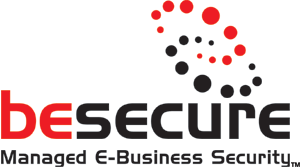- Services
-
Solutions
- Solutions
- Fraud Prevention
- Threat Detection & Response
- Identity & Access Management
- Information Protection
- Internet Of Things (IoT) Security

Our IoT security solutions unlock business value by enabling secure access to IoT data.
read more
Cyber Security Solutions
Our Cyber Security Solutions deal with challenging aspects such as fraud prevention, threat detection & response, identity & access management, IoT security, cloud security and information protection, among others.
read more -
Managed Security
- Managed Security
- HybridSIEM

HybridSIEM - Next Generation SIEM Service
read more - Connectivity
- Web Applications
Managed Security Services
Our Managed Security Services strengthen our customers cyber defense programs often at a fraction of the cost of in-house security resources utilizing BesecureCloud big data and supercomputing capabilities.
read more -
Education
- Education
- Information Security Training
- ISO 27001 Certification
- Risk Management Training
- Business Continuity Training
-
Security Awareness
A training program for security awareness will inspire and encourage everyone to practice secure computing because everyone - from management to end users - will understand that they have a vested interest in secure computing.
read more
Education
Comprehensive vendor-neutral business continuity, information security, ISO 27001, risk management certification on-premise or e-learning training courses and awareness briefings for executive management, security and system administrators and corporate users.
read more -
Certificates
- Certificates
Certificates
Entrust Datacard is one of the most trusted brands in online security with one of the most respected client bases, empowering governments, enterprises and financial institutions in more than 5,000 organizations spanning 150 countries.
read more - Events
-
About Us
- About Us
About Us
We are a leading provider of Governance, Risk & Compliance (GRC) services, Cyber Security solutions, Managed Security services, Certification Training and Awareness programs, trusted by global organizations across telecommunication, financial services, energy industries and other medium - large enterprises.
read more
Endpoint Encryption Solution
Every 53 seconds a laptop is stolen somewhere in the world and hundreds of thousands of smartphones and storage devices are lost. But when a device is lost or stolen only 3% of the costs comes from replacing the hardware wheres the remaining comes from the data loss and the potential reputation damage to your organization without considering the increasing legal and regulatory requirements around data security or privacy such as GDPR.
Our endpoint encryption solutions based on latest AES 256-bit encryption technology gives you the benefit of simplicity and efficiency to protect your most valuable information through full disk and file level encryption. Encrypting your sensitive data means it's useless to criminals and unauthorized viewers regardless of whether it is accessed from stolen laptops, lost USB devices or data stealing via malware. By implementing both full disk and file level encryption, your organization gets the optimal protection of your valuable data either at rest or in transit.
Full disk encryption solution
Full disk encryption protects data at rest that is everything stored on the hard drive including files, metadata and directory structures and it can also be applied to removable media such as USB drives. Our full disk encryption solution incorporates pre-boot authentication. This means the users have to authenticate themselves before the operating system starts, giving an extra layer of security. This step is transparent to the user and does not affect productivity. Full disk encryption greatest advantage though is that it eliminates user error as a point of risk. It simply encrypts everything.
File level encryption solution
Unfortunately none full disk encryption solution does not protect data in transit, that is once the date leave the system. For the security of data at rest and in transit we offer a file level encryption solution. Specific files and folders on any given device can be encrypted and will remain encrypted even when its copies across the network. Administrators can set policies that automatically encrypt files based on their attributes such as location or file type, which is completely transparent to the end user. Furthermore policies can be set for application control over encrypted data. For instance certain applications can be blocked from accessing encrypted data or restrict the exchange of encrypted files without restricting legitimate messages.
